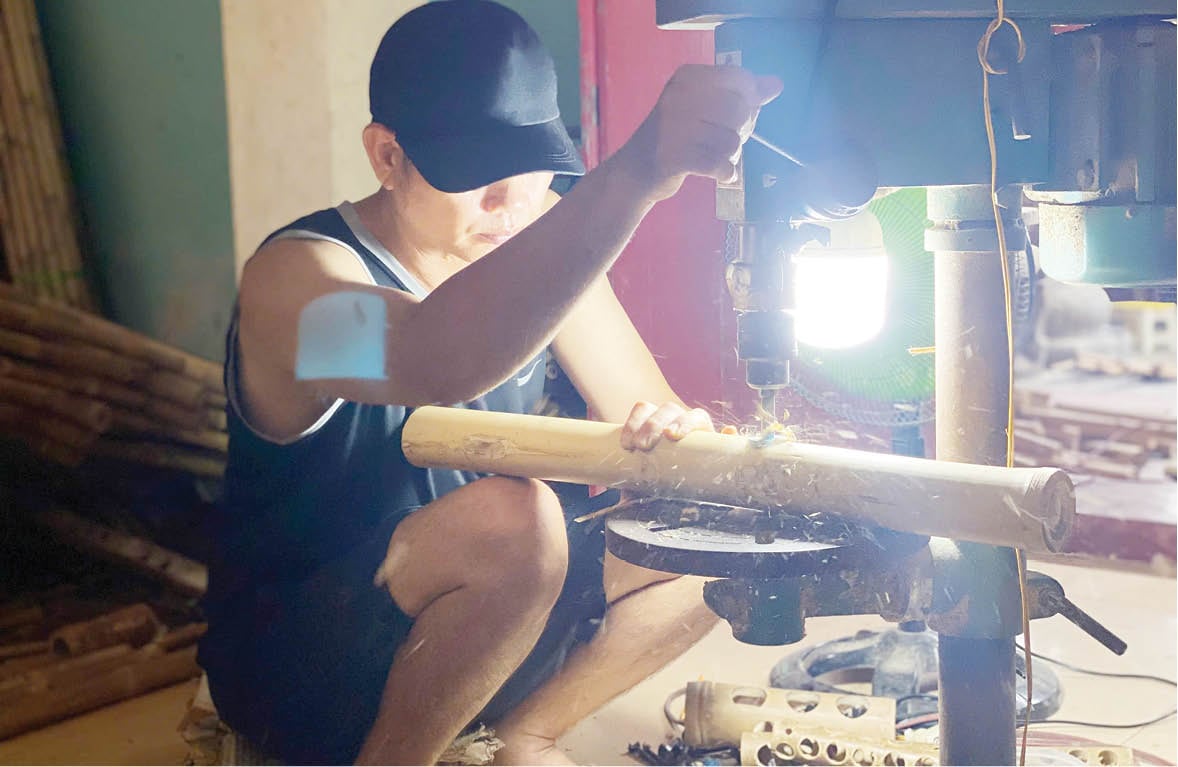 |
| The revival of rattan furniture contributes to preserving the quintessence of traditional craftsmanship |
Return with a bang
Next to a lovely rattan table and chair set, Mr. Hoang Lan (residing in Thuan Hoa ward) leisurely enjoys tea. The curved rattan chair hugs his figure, the back of the chair is woven into a neat mesh, evoking the image of the craftsman's skillful hands. He shared: "This type of table and chair set gives me a cool, rustic feeling, and is suitable for the living space of Vietnamese people."
There was a time when rattan and bamboo were considered less luxurious and modern than sleek, mass-produced, low-cost industrial furniture products. Many consumers assumed that rattan and bamboo were materials of the past, only suitable for old, rustic spaces. The fierce competition in the modern furniture market has caused rattan and bamboo products, despite their beautiful designs and high craftsmanship value, to gradually be overshadowed in the minds of consumers.
However, in recent years, the return of bamboo and rattan is taking place strongly and impressively - not only in traditional craft villages but also in trendy living spaces, from luxury apartments to resort chains, from modern cafes to boutique stores. Bamboo and rattan not only appear but are also decorated as the main aesthetic highlight in many spaces. It is no longer a mere nostalgia, but a conscious revival - both preserving the quintessence of craftsmanship and fully integrating into modern life. Along with the rise of green lifestyle, the need for responsible consumption and the increasing demand for cultural products, bamboo and rattan have found a worthy place. This is a natural material, quickly regenerated, easily decomposed and imbued with historical and cultural values.
Preserving crafts
Mr. Le Duc Quoc Bao - owner of Hue Bamboo and Rattan establishment in Phu Xuan ward, has been involved in the profession for nearly 17 years. “I learned the profession from my father. Making bamboo and rattan requires carefulness from the stage of selecting raw materials - straight, termite-resistant bamboo joints, to the techniques of carving and weaving. More importantly, the craftsman must always innovate the design to keep up with the tastes. Each product is a handmade work, it can take from a few hours to half a month to complete,” he shared. Mr. Bao's establishment's products are trusted by customers all over the country, there are even orders to design the entire interior of bamboo and rattan for restaurants, cafes, homestays...
Not only bringing economic value, the revival of rattan furniture also contributes to preserving the quintessence of traditional handicrafts, creating livelihoods for thousands of workers in rural areas. In Bao La rattan weaving village, young workers are following in the footsteps of senior artisans. Besides preserving traditional techniques, young people are updating trends and modern design thinking every day to diversify products, in order to reach the high-end market.
A typical example is the set of baskets and hexagonal decorative lamps of Bao La Bamboo and Rattan Cooperative which has been honored with the 4-star OCOP certification, an important milestone affirming the position and product quality of the craft village. The products are recognized for their clear origin, methodical production process and stable quality, while emphasizing local cultural elements and creativity in design. These are the values that Bao La Bamboo and Rattan Craft Village is striving to preserve and promote.
The silent journey of bamboo and rattan in every modern living space opens up promising paths for handicrafts in the green living era.
Source: https://huengaynay.vn/kinh-te/noi-that-may-tre-dan-huong-dong-gio-noi-trong-dien-mao-moi-156164.html







![[Photo] Da Nang: Hundreds of people join hands to clean up a vital tourist route after storm No. 13](https://vphoto.vietnam.vn/thumb/1200x675/vietnam/resource/IMAGE/2025/11/07/1762491638903_image-3-1353-jpg.webp)


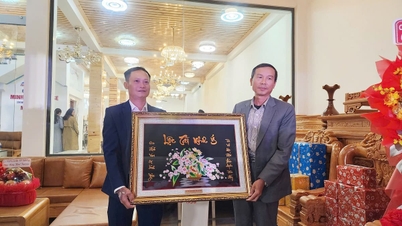

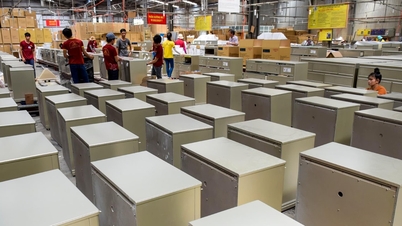







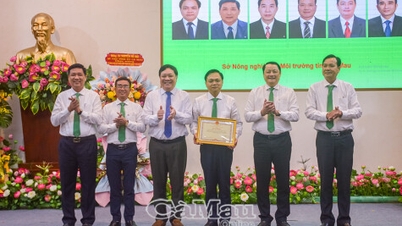
















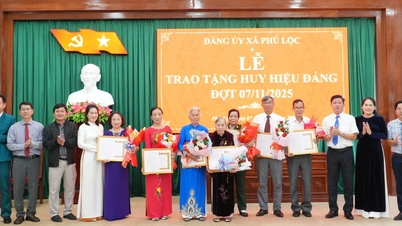




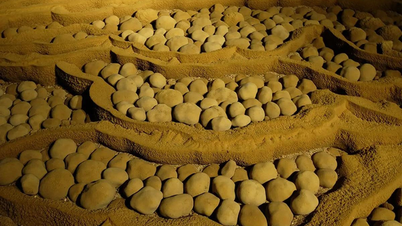





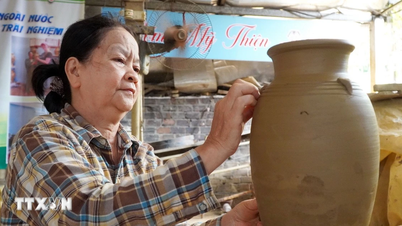


































































Comment (0)